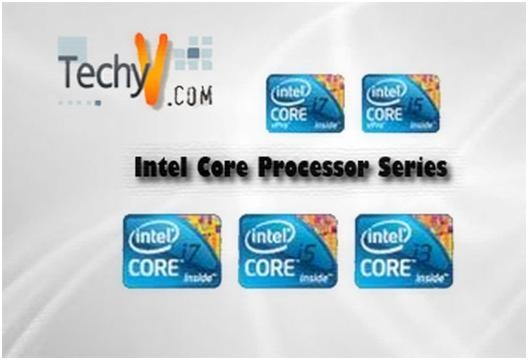Intel Core Processor Series Comparisons
Intel is synonymous with the word “processor” in the computing world. Why is this? Intel brings a reputation for revolutionary changes in computer chips.

To continue along the tradition of revolutionizing the computer chip industry, Intel has developed three fresh processors to present a superior computing experience to the users. These new core processors are known as the i3, i5, and i7 series. The Core i3 series are considered the entry level processors, whereas Core i5 series and Core i7 series are medium and high level processors, respectively. All of these processors have superior specifications when compared to the prior generation of core processors. Let’s take a brief glance at each.
Core i3
Of all the fresh products offered by Intel, the Core i3-500 series processors are the most fundamental. Core i3 processors were first launched in January 2010. They include superior 32nm Clarkdale-based design that permits more transistors to be placed on a single die.
In addition, they contain a graphics processor. They all include dual cores, four threads and support hyper-threading as well as virtualization. Comparatively, the only limitation of the Core i3-500 series is that the processors do not have Turbo Boost. The Core i3 500 processors employ the LGA1156 socket. The clocking rate of recurrence of Core i3-500 series processors varies from 2.9 GHz to 3.2 GHz.
Core i5
Core i5 was initially rolled out on September 8, 2009. The Core i5 600 series processors are also 32nm processors based on the Nehalem micro architecture Clarkdale-based design, which includes a graphics processor along with a microprocessor on a single die, like the Core i3.
The Core i5 600 series processors have dual cores supporting hyper threading, virtualization, Turbo Boost, as well as the AES instruction set. A portion of Core i5 processors trait 4 cores through 4 threads at the same time, and some come with 2 cores along with 4 threads. As with all of the processors, Core i5 processors sport Intel HD graphics, 8MB L3 cache, as well as Intel Smart Cache technology. The Core i5 600 series processors are essentially on the same level as medium-range Core 2 Quads. Core i5 600 series employs LGA1156 socket. The clocking rate of recurrence of The Core i5 600 series processors are from 2.4 GHz to 3.33 GHz.
Core i7
The primary alternate of the Core i5 product, the Core i5 700 series or Core i7 series processors, are the high – end processors of the Intel Core generation. Core i7 series processors are contrived at 45nm architecture. The latest Core i7 processors are based on Lynnfield quad-core processor. Additionally, the quad-core for the mobile version was developed based on Clarks-field, although recently the mobile dual-core processor Arrandale based has been announced. The Core i7 processors are primarily quad-core processors. They do not support hyper-threading, but they provide Turbo Boost as well as support virtualization. The Core i7 processors have no integrated graphics processor like the Core i3 and Core i5. Their performance is on average mildly superior to high-end Core 2 Quad as well as Phenom II types. The Core i7 series processors also employ the LGA1156 socket. They also consist of 8 threads. Furthermore, the clocking frequencies stroke 3.06 GHz. Core i7 processors contain 8 MB of smart cache which can be up to12 MB.


















